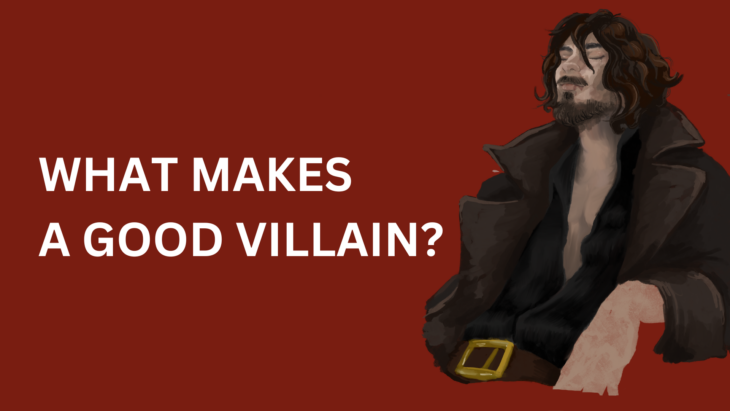
What Makes A Good Villain? A Game Design Guide
Volume 27, Issue 22
Image credit belongs to me (Malena Rose)
Heroes are boring without a great villain to challenge them. But designing a memorable antagonist isn’t just about making them super evil. The most captivating gaming villains make us feel something beyond simple hatred, whether it’s this weird admiration, genuine fear, or even uncomfortable understanding.
Give Them a Point
The most compelling villains believe they’re the heroes of their own story. Look at Sephiroth from Final Fantasy VII—he’s not destroying the world because “evil is fun,” but because he genuinely believes humanity has corrupted the planet. His methods are extreme, but his core motivation (protecting the planet) mirrors what many environmentalists feel.
When designing your villain, start with a reasonable goal or belief, then push it to unreasonable extremes. Players will connect more with antagonists whose worldview contains a grain of truth they can recognize.
Humanize Without Excusing
Your villain needs humanizing elements without making excuses for their actions. Portal’s GLaDOS uses humor to become endearing despite her murderous tendencies. The Civilization series makes opposing leaders relatable through recognizable human traits and reactions, even as they declare war on you.
Give your villain small moments that reveal their humanity – a love of art, a soft spot for animals, or a tragic backstory, but be careful not to use these as excuses for their terrible actions.
Make Them Competent
Nothing deflates tension faster than an incompetent villain. Players need to believe your antagonist is a genuine threat. The best villains are often one step ahead, forcing players to adapt and grow to overcome them.
Handsome Jack from Borderlands 2 constantly outmaneuvers players, hacks their communications, and undermines their victories. His competence makes finally defeating him satisfying rather than inevitable.
Create Personal Stakes
The hero-villain relationship works best when it’s personal. Maybe your villain was once a mentor to the protagonist, like Liquid Snake to Solid Snake in Metal Gear Solid. Perhaps they’re a dark reflection of what the hero could become, like Andrew Ryan to the player in BioShock.
These connections raise the emotional stakes beyond “save the world” to something more intimate and compelling.
Avoid Cringe Clichés
Skip the maniacal laughter, world domination for its own sake, and monologuing about evil plans. Instead, give your villain unexpected traits—maybe they’re soft-spoken rather than bombastic, or they genuinely care about their subordinates instead of executing them for failure.
Remember that the difference between a forgettable villain and an iconic one often comes down to these distinctive characteristics that subvert player expectations.
In the end, your game’s hero may be who players control, but a well-crafted villain is who they’ll remember long after playing it.
- How To Get Started With Art - 25th April 2025
- What Makes The Finnish Game Industry So Special - 17th April 2025
- Why Retro Gaming Is Still Cool In 2025 - 11th April 2025
